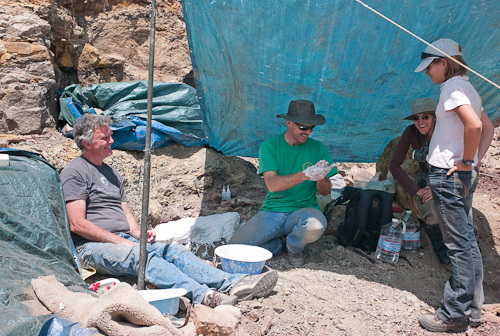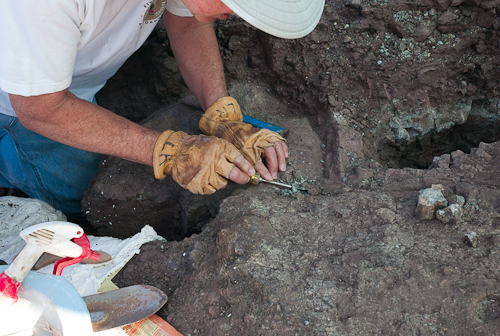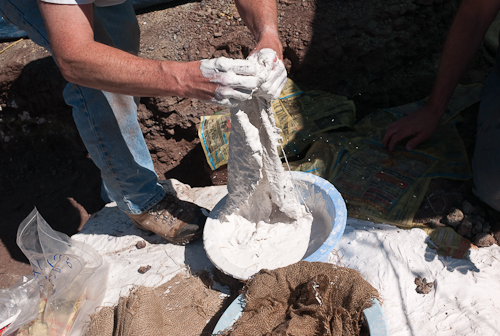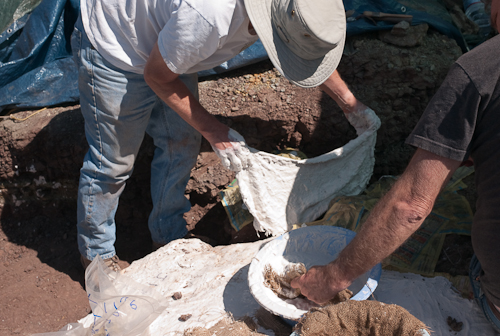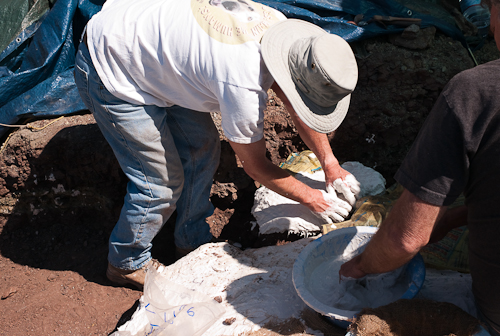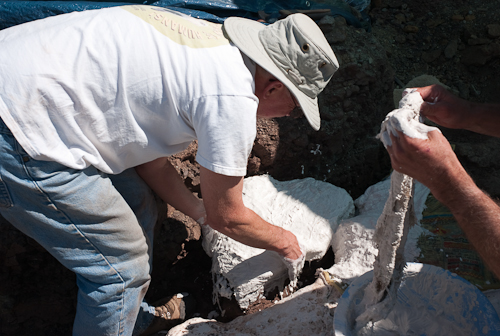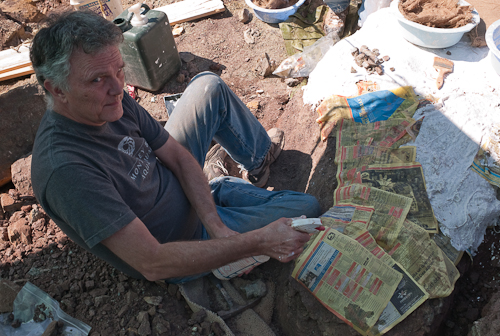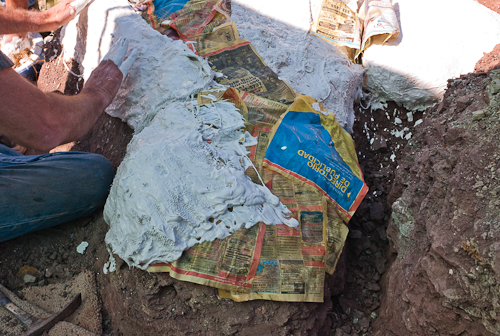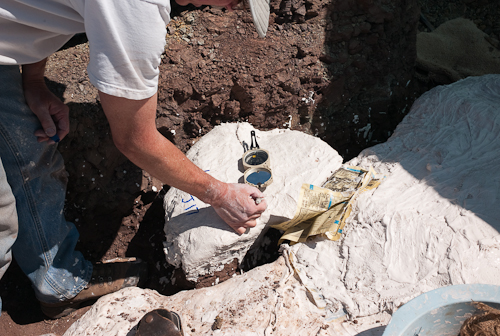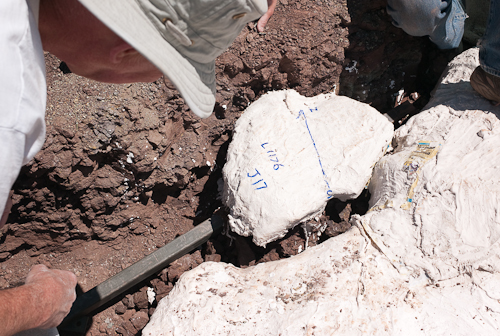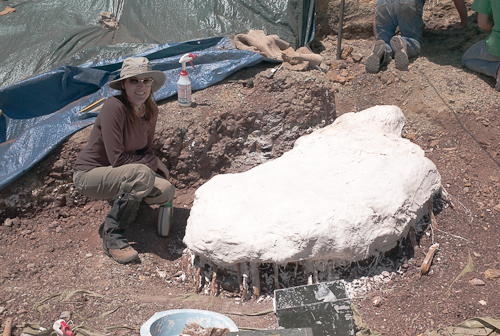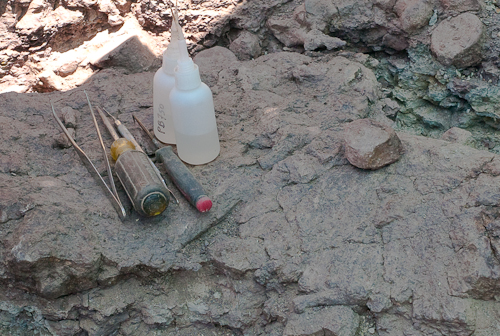Joggins Fossil Cliffs
 Tour of Nova Scotia - Sunday, July 25, 2010
Tour of Nova Scotia - Sunday, July 25, 2010
Back in May 2009 our friend Dr. Spencer Lucas, Curator of Paleontology at New Mexico Museum of Natural History and Science in Albuquerque, said that his favorite place in all the world was Joggins Fossit Cliffs. We signed up for the guided tour and Matt led us down to the cliffs to see millions of years of history. Spencer was there the day before with his wife Yami and we were sad to have missed them by only a day before they headed to Argentina for further research.
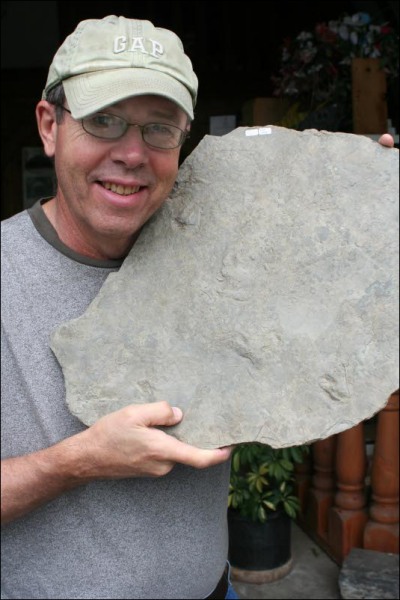
Spencer is considered the leading expert in fossil trails and tracks in the world today. The following is an article from the Chronicle Herald from Halifax. Fossilized tracks in Valley oldest known on Earth
Scientist: Beach finds offer glimpse at first land animal
BY GLEN PARKER
AVONPORT — A diversity of footprints dating back 350 million years continue to bring world-renowned paleontologists to Blue Beach in Kings County.
Spencer G. Lucas, curator of paleontology and geology at the New Mexico Museum of Natural History and Science, made a return visit to Blue Beach last week.
"Nova Scotia is blessed with thousands of tracks and is one of the best footprint areas in the world," Lucas said.
"We’re looking at the earliest conquest of land. This is one of the largest collections (of fossils) from this age. For me, it’s like a mecca."
About 350 million years ago, terrestrial insect life was well developed but little evidence of track makers has been found.
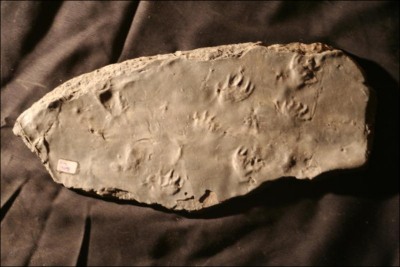
"It took a longer time for vertebrae to get diverse," the paleontologist said.
"This is one of the big transitions from amphibians to reptiles."
Lucas was last here in 2004 studying the Blue Beach footprint specimens. This collection has grown to about 1,800 specimens. These footprints are known to be the oldest discovered on Earth, about 40 million years older than tracks discovered across the Minas Basin at Joggins, Cumberland County.
"We have footprints of at least five species," said Chris Mansky of the Blue Beach Fossil Museum.
Most of the footprints appear to be assignable to one type of creature, a one-metre-long animal believed to be a rare link between ocean-dwelling fish and the large reptiles we call dinosaurs today.
"With these footprints, we get a glimpse that the first land animals were here," Mansky said.
"We can see that these are 15 million years older than anything known before."
Sir William Edmond Logan, Queen Victoria’s chief coal geologist, first discovered the fossilized footprints at Blue Beach in 1841.
Tracks have been found in a number of different sedimentary rocks including shale, sandstone, mudstone and siltstone. They are important for studying repetition and pattern of tracks to determine certain characteristics such as the size and shape of the animals that left the tracks. Sometimes, there are indicators of skin texture and even the existence of armour plating.
The Blue Beach Fossil Museum is located on Blue Beach Road near Avonport. The beach itself is in the geological area known as the Horton Bluff formation on the shores of Minas Basin.
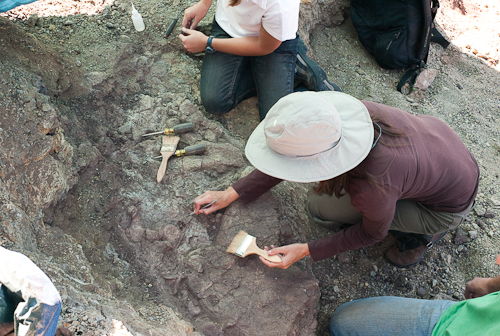 We were invited by Dr. Spencer Lucas, Curator of the New Mexico Natural History Museum to join a dig in northern New Mexico as they uncovered and field jacketed several 220,000,000 year old fossils. We were joined by three other volunteers. Randy, a Junior High language arts and English literature teacher from Albuquerque, Christoph and his daughter Nadine, both from Switzerland on sabbatical in Albuquerque. We were led by Larry Rinehart a field geologist with the museum.
We were invited by Dr. Spencer Lucas, Curator of the New Mexico Natural History Museum to join a dig in northern New Mexico as they uncovered and field jacketed several 220,000,000 year old fossils. We were joined by three other volunteers. Randy, a Junior High language arts and English literature teacher from Albuquerque, Christoph and his daughter Nadine, both from Switzerland on sabbatical in Albuquerque. We were led by Larry Rinehart a field geologist with the museum.